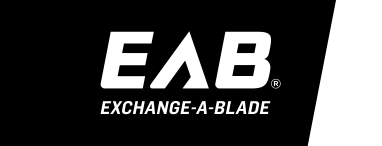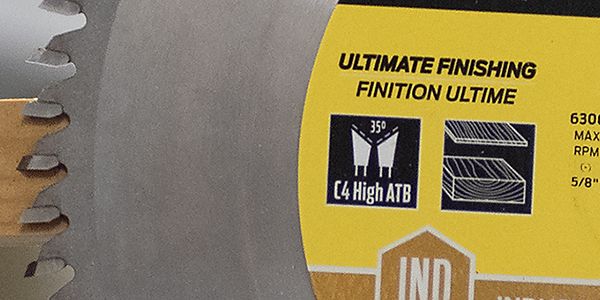How to cut the perfect hole in wood using a hole saw
2018/07/17
Need to cut a big hole, the easy way?
Typically, a hole saw comes in three parts:
.jpg)
The hole saw
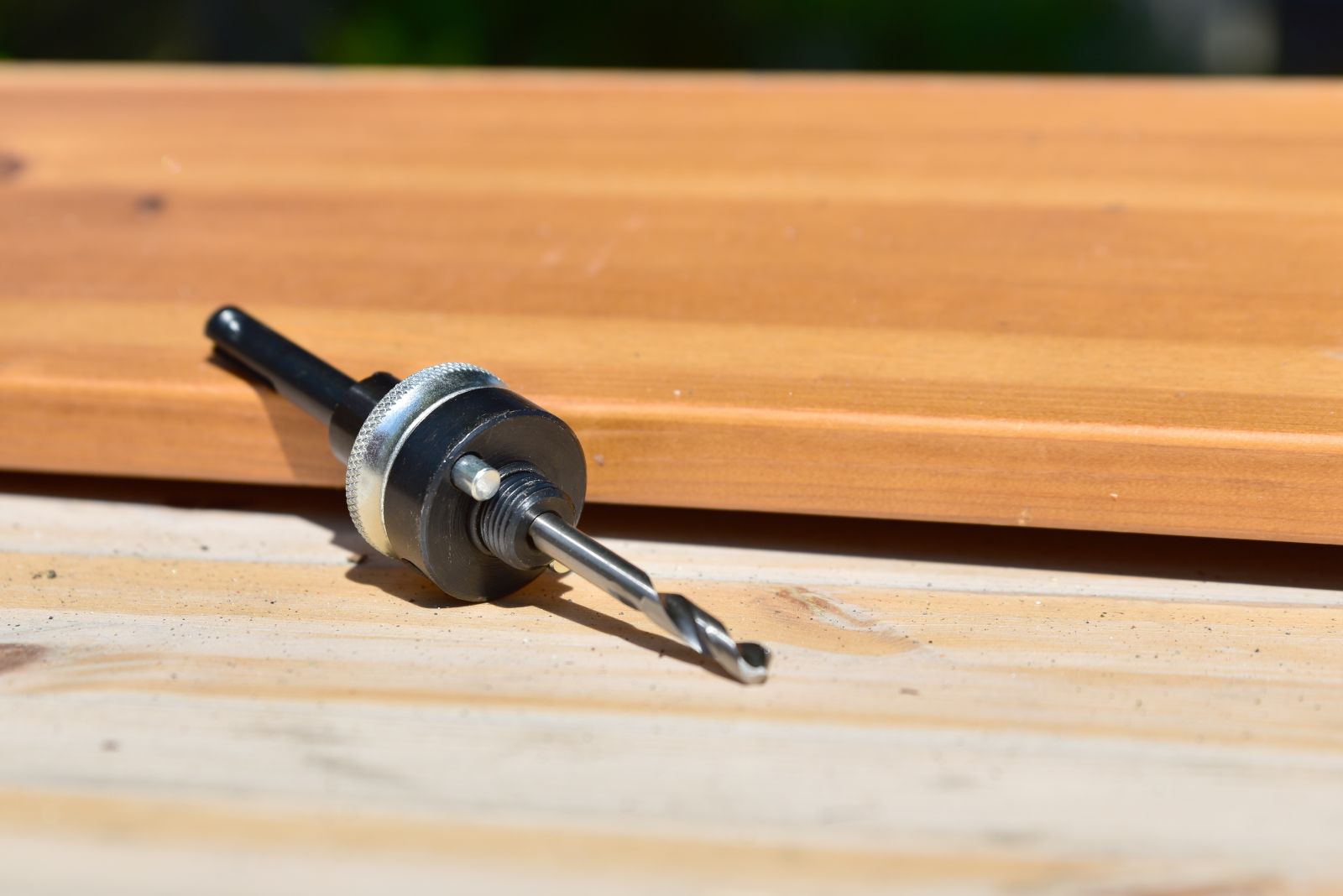
Screw-in mandrel - attaches the hole saw to the drill (pilot drill included)
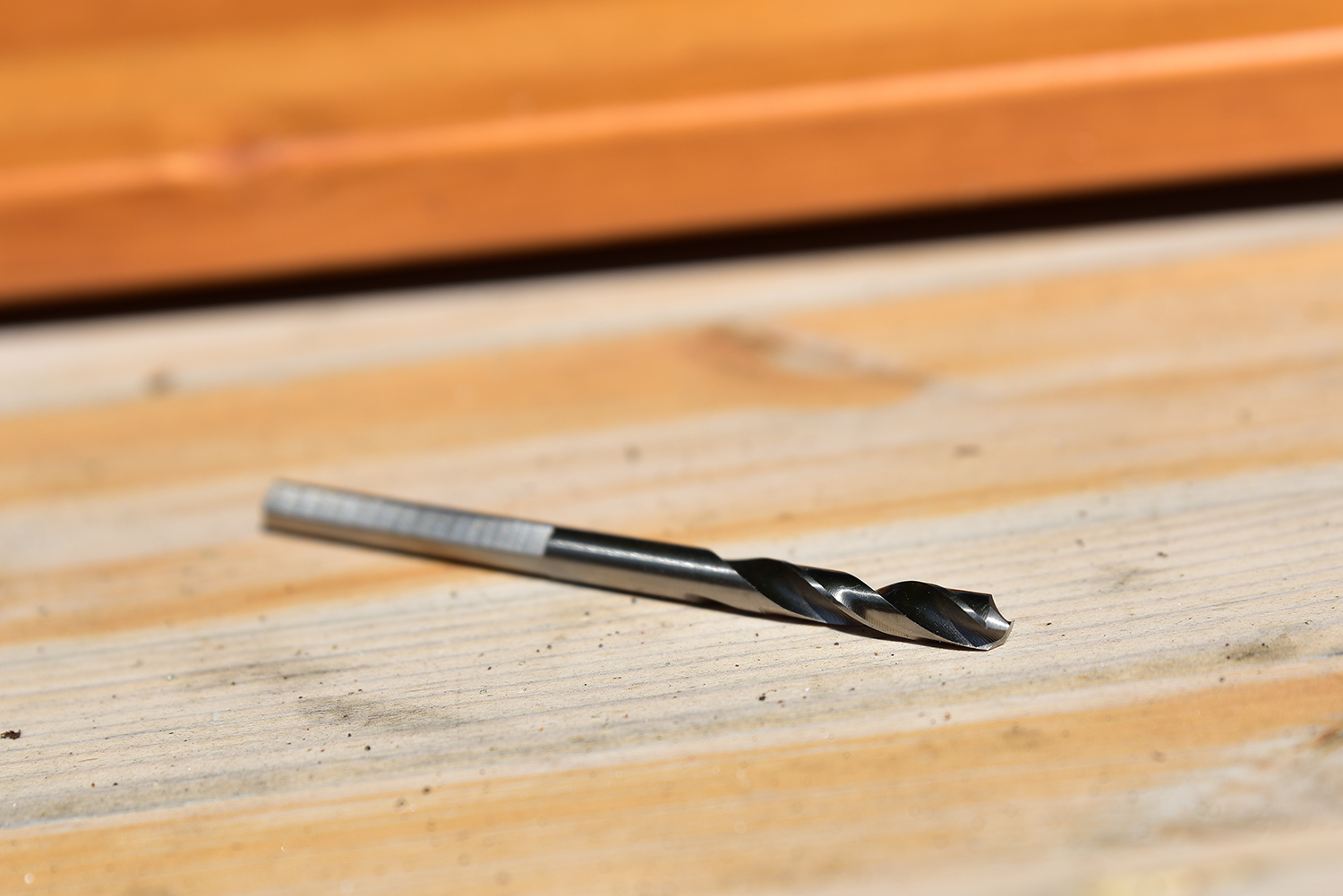
Mandrel pilot drill (pilot drills can be replaced when needed)
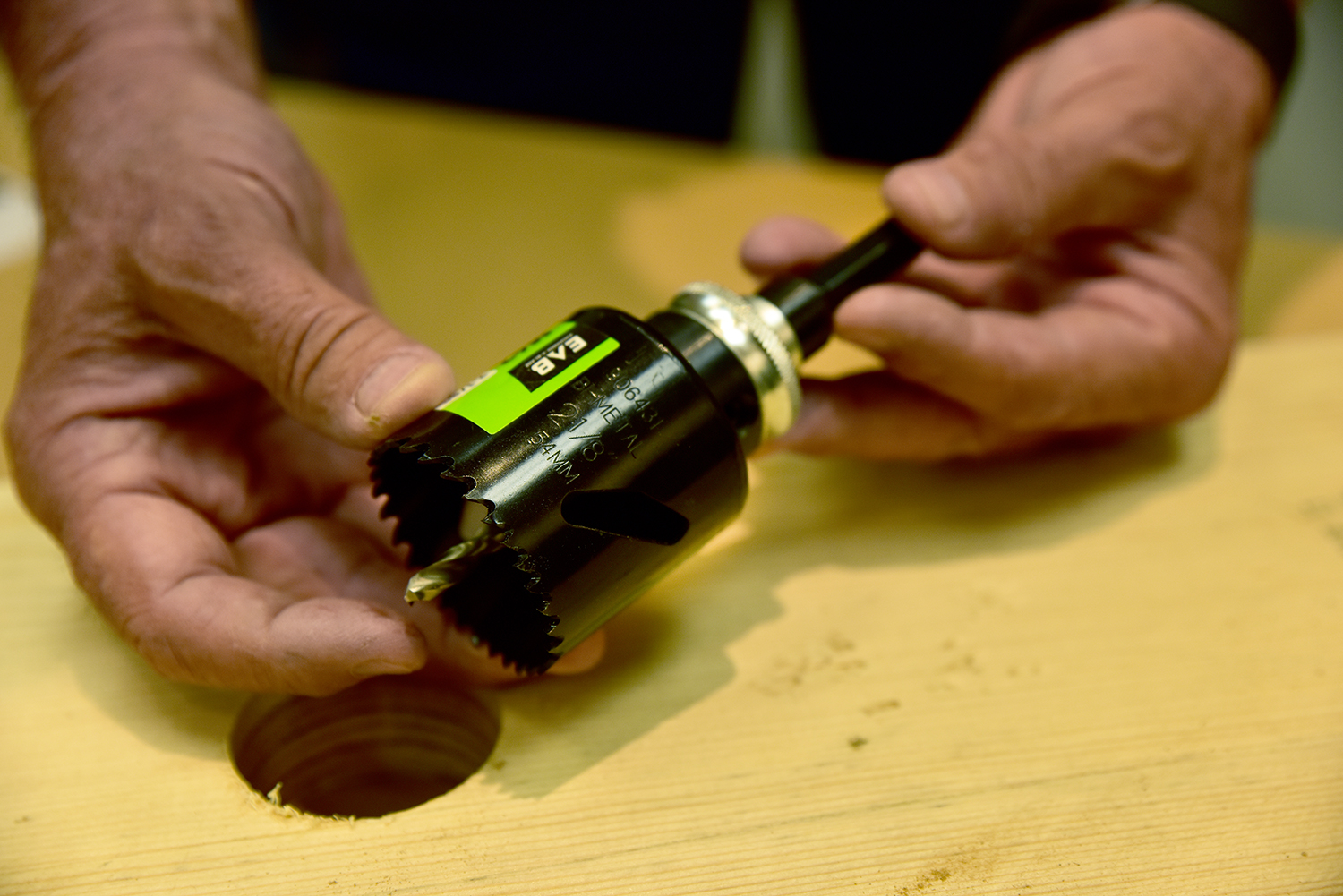
Drill loaded with hole saw, mandrel, and pilot drill—ready to go.
Use a bimetal hole saw to cut wood and other materials
Exchange-A-Blade has one of the most extensive hole saw programs in the industry in both usage and sizes. However, here we are going to talk about bimetal hole saws.
Bimetal hole saws are designed to cut everything from wood and plastics to ferrous and non-ferrous metals, including stainless steel. Although they are slower cutting than carbide hole saws they provide a much smoother finish. These are the workhorses of the hole saw family and are available in up to 39 sizes from ¾” to 7 ⅞”. If you are not sure which size to choose, check recommended hole saw RPMs for your material.
About bimetal hole saws
A bimetal hole saw consists of a very hard, high speed steel band, which is welded onto a high carbon steel body and a thick, high carbon steel backplate. The high-speed steel band is ground to a 4/6 tooth configuration and the teeth are “set” to give adequate side clearance. The side clearance allows the body of the saw to travel through the material without binding and affects the amount of space between adjacent teeth and the amount of material each tooth clears. The 4/6 tooth configuration or “pitch” alternates between 4 and 6 TPI, or teeth per inch, around the body of the saw. This variable pitch enhances cutting by allowing more efficient waste removal and reducing heat buildup and vibration.
Cutting edges usually consist of saw like, bimetal teeth, which are “set” to give side clearance, or larger carbide teeth for fast cutting, or diamond grit cutting edges for ceramic and tile products. For best results and safety, use a hole saw designed to cut the material at hand and use the appropriate cutting speed and lubricant.
Is a cooling lubricant needed when cutting with a hole saw?
It is imperative that water be used as a cooling lubricant when cutting with any diamond grit hole saw. Failure to do will reduce the life of the hole saw dramatically. While no lubricant is required when cutting holes in wood products, cutting oil will help extend hole saw life when cutting a large number of holes in ferrous and non-ferrous metals.
Gauge your hole saw cutting speed for the best results
Speed kills, and this certainly holds true for hole saws. Two rules to remember are:
- The harder the material, the slower the drilling speed
- The larger the diameter, the slower speed you should use
While many drills will run at 2,000 rpm, running hole saws at these speeds will cause them to burn out, cut slower because they can’t eject waste material, and can become very hard to control. Review the recommended cutting speeds for both materials being cut and size of hole saw being used. While it’s impractical to accurately judge the speed of a typical hand drill, you can judge the ratio of recommended speed versus the full speed of the drill. If your maximum drill speed is 1,800 rpm and the recommended cutting speed is 600 rpm, you should run the drill at approximately one third full speed. If the recommended cutting speed is 200 rpm, you should run it at a very slow speed. Please refer to our web site which provides a list of recommended cutting speeds for various materials.
Clear chips and waste while using your hole saw
When cutting thicker material, remember to clear chips and waste material from the hole. Cutting speed may be reduced and heat will build up by chips and waste material building up at the base of the blade and between the gullets. While cutting the hole, using a slight up and down motion will help remove excess waste material. If this doesn’t work, periodically stop cutting, remove the hole saw and clear the waste material. This will speed up the cutting, reduce heat buildup and help extend the life of your hole saw.
Recommended cutting technique
Selecting the right bimetal hole saw for you
Exchange-A-Blade has three lines of bimetal hole saws consist of the following:
Professional Bimetal
- Value priced
- M2 high speed steel
- 26 sizes from ¾” – 6”
- 1 ⅜” cutting depth
- Longer lasting
Industrial Bimetal
- Premium M3 high speed steel & heavy 3/16” backing plate
- 39 sizes from ¾” – 7 ⅞”
- 1 ⅝” cutting depth
Razor Back M42 Cobalt Bimetal
- Fastest cutting, longest lasting bimetal hole saw on the market
- M42 high speed steel outlasts M3 Industrial 2:1
- Heavy duty 3/16” backing plate
- Extra deep 1 ⅞” cutting depth
- 25 sizes from 1” – 6”
- Special slot for easier plug removal
